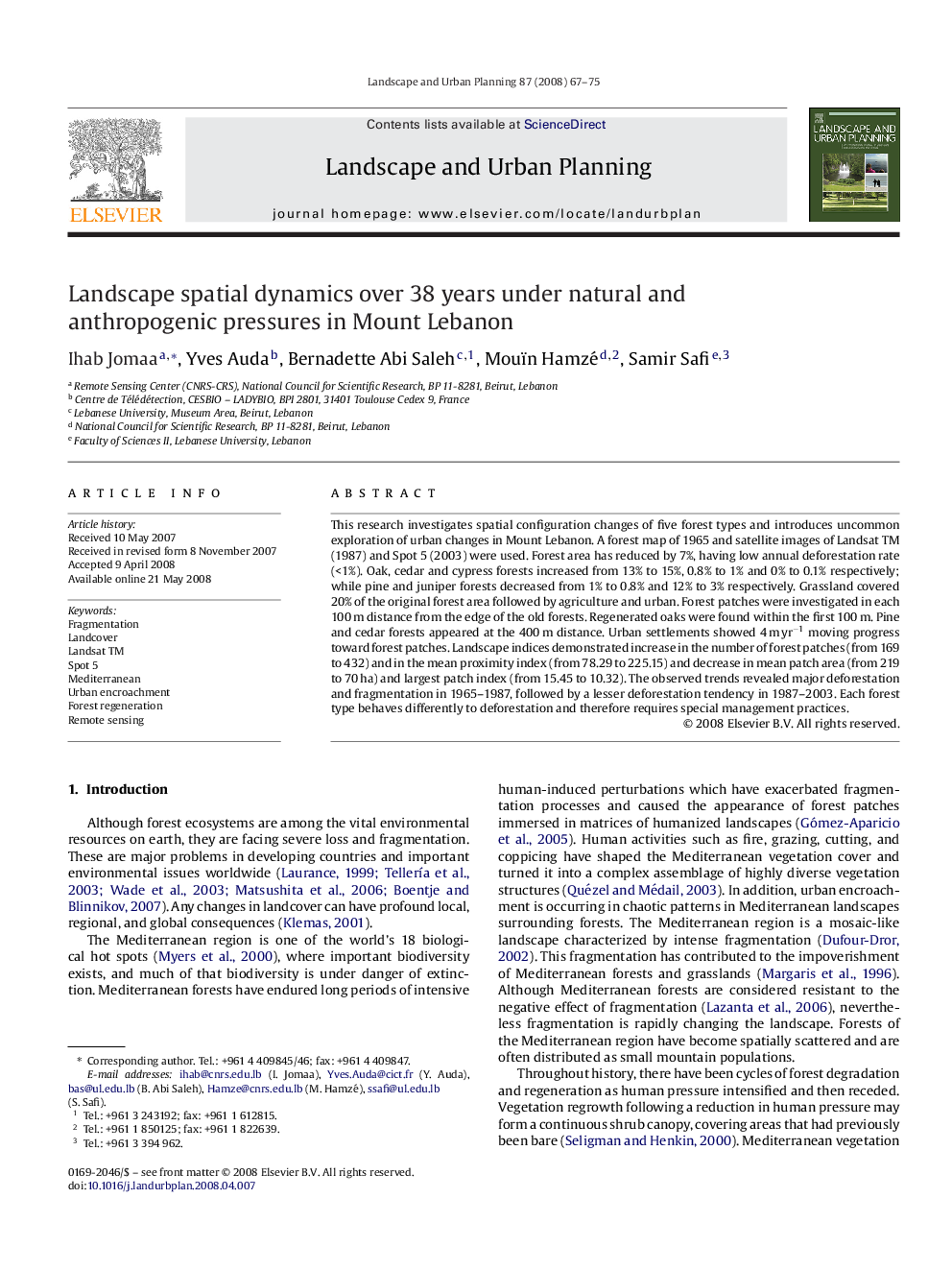| Article ID | Journal | Published Year | Pages | File Type |
|---|---|---|---|---|
| 1050070 | Landscape and Urban Planning | 2008 | 9 Pages |
This research investigates spatial configuration changes of five forest types and introduces uncommon exploration of urban changes in Mount Lebanon. A forest map of 1965 and satellite images of Landsat TM (1987) and Spot 5 (2003) were used. Forest area has reduced by 7%, having low annual deforestation rate (<1%). Oak, cedar and cypress forests increased from 13% to 15%, 0.8% to 1% and 0% to 0.1% respectively; while pine and juniper forests decreased from 1% to 0.8% and 12% to 3% respectively. Grassland covered 20% of the original forest area followed by agriculture and urban. Forest patches were investigated in each 100 m distance from the edge of the old forests. Regenerated oaks were found within the first 100 m. Pine and cedar forests appeared at the 400 m distance. Urban settlements showed 4 m yr−1 moving progress toward forest patches. Landscape indices demonstrated increase in the number of forest patches (from 169 to 432) and in the mean proximity index (from 78.29 to 225.15) and decrease in mean patch area (from 219 to 70 ha) and largest patch index (from 15.45 to 10.32). The observed trends revealed major deforestation and fragmentation in 1965–1987, followed by a lesser deforestation tendency in 1987–2003. Each forest type behaves differently to deforestation and therefore requires special management practices.
